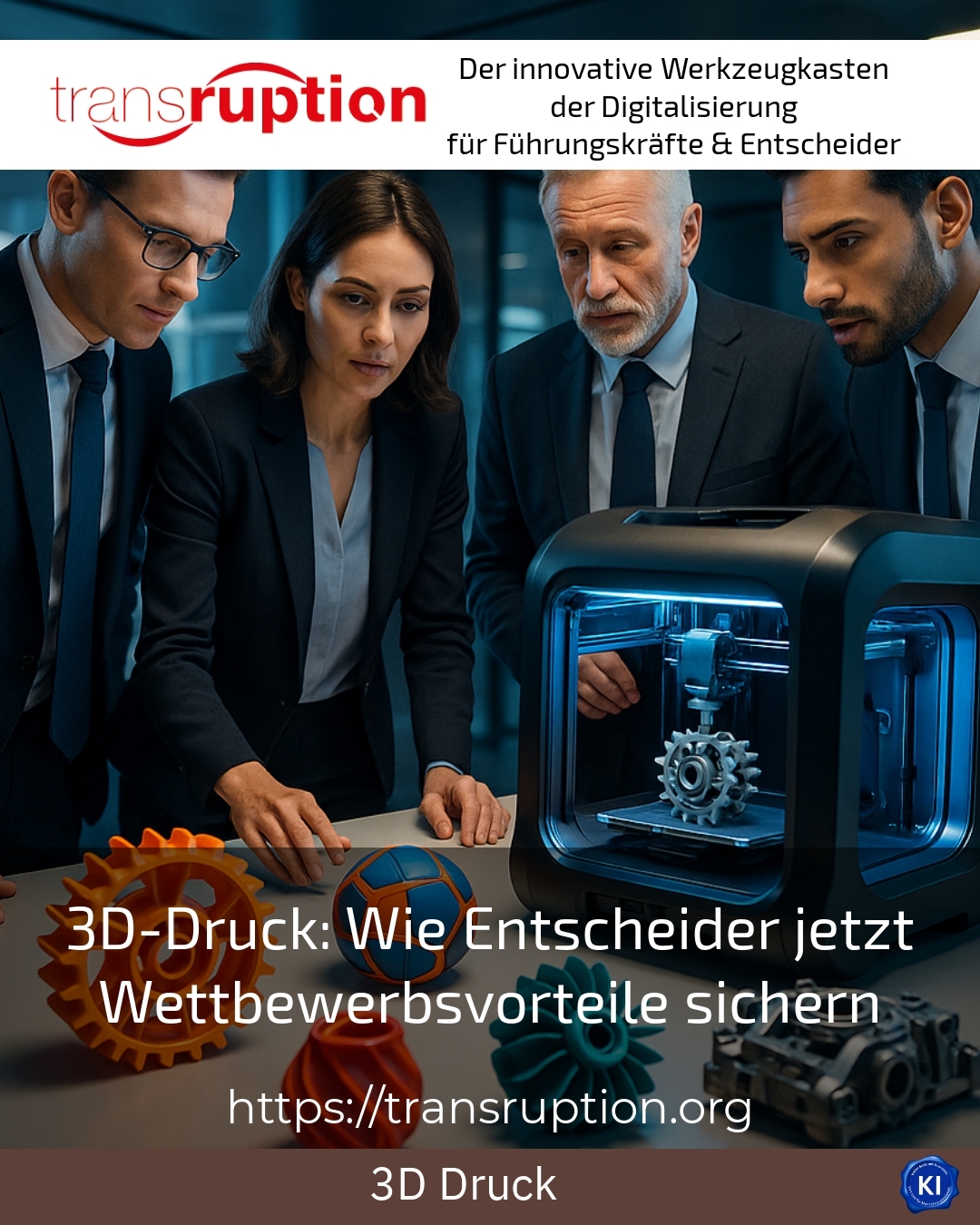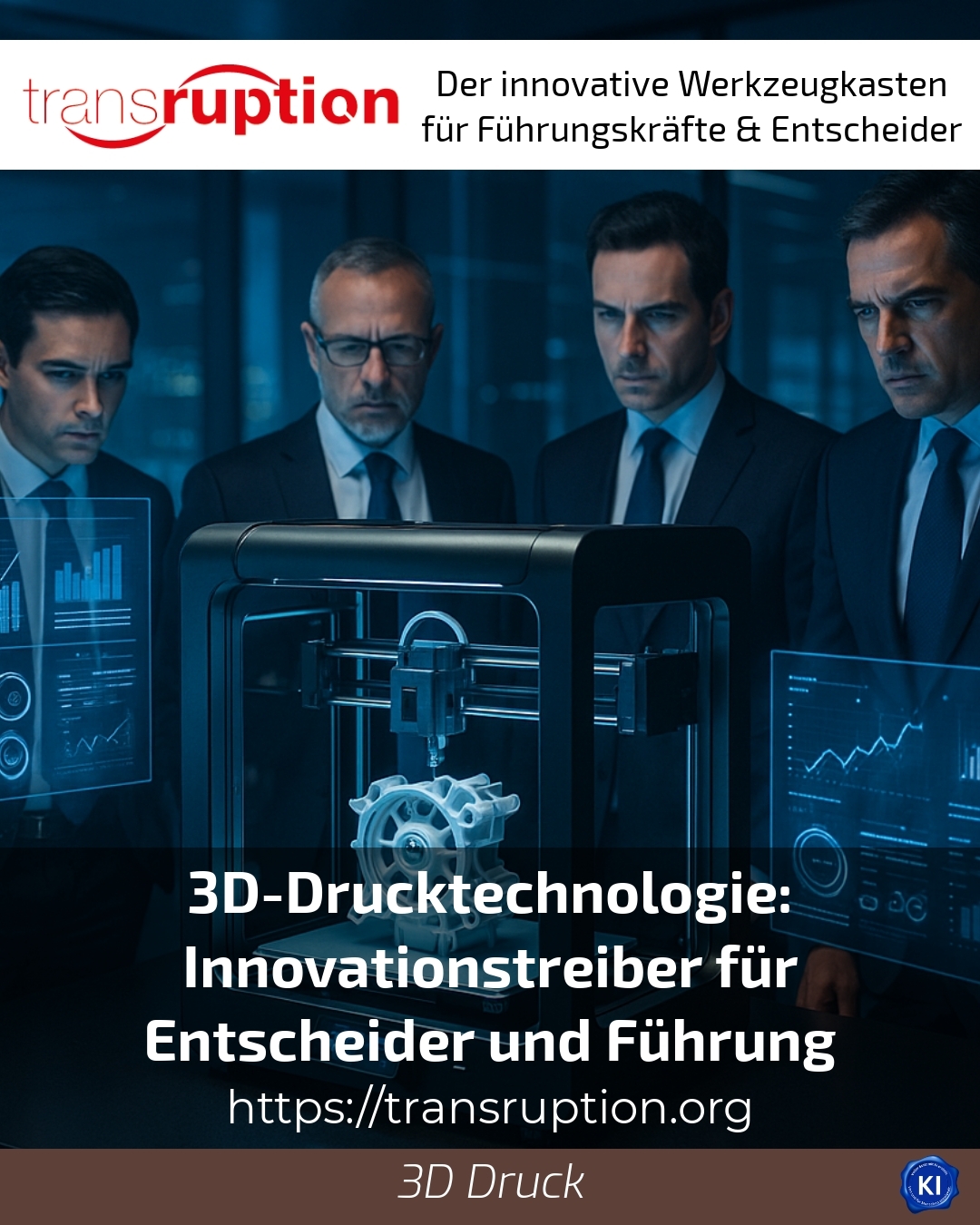The role of 3D printing technology in the changing industry
3D printing technology has established itself as a key driver of innovation for decision-makers and managers. It is fundamentally changing production processes and offers new opportunities to design products faster, more flexibly and more cost-efficiently. For many managers, understanding the potential of this technology is crucial to successfully implementing projects and ensuring the competitiveness of their company.
3D printing technology is by no means just a niche tool for prototypes, but is used in numerous industries. It helps companies to minimise material waste and save valuable resources. At the same time, new processes such as printing with liquid metal or multi-material production enable innovative product designs that were previously unthinkable[1][4].
3D printing technology as a strategic companion in management and decision-making processes
Decision-makers use 3D printing technology to realise various advantages in their strategic projects. These include the ability to produce complex components quickly and individually without having to rely on large stocks or external suppliers. This results in greater flexibility in production and shortens the path from the idea to the finished product.
In some cases, clients also report easier innovation management, as creative development iterations are much easier to carry out thanks to rapid prototyping. For example, 3D printing technology can accelerate the implementation of new product ideas and simultaneously reduce the error rate in series production. These effects help managers to support projects more efficiently and provide relevant impetus for teams.
Value chain issues are another area in which the technology provides support. The greater regionalisation of production, supported by 3D printing, makes companies less dependent on global supply chains and minimises transport costs and times. This often leads to increased locational advantages and can encourage local investment[3].
Examples from industry on the practical application of 3D printing technology
BEST PRACTICE at company XYZ (name changed due to NDA contract)
A mechanical engineering company has revolutionised the production of spare parts with 3D printing technology. Instead of large-volume warehousing, components are printed on demand. This has optimised warehouse logistics and significantly improved product availability. In addition, individual customer requirements can be flexibly realised in this way.
BEST PRACTICE at ABC (name changed due to NDA contract)
A manufacturer in the medical sector uses 3D printing to produce patient-specific implants and prostheses. The technology enables precise customisation to individual anatomical requirements. This significantly improves the treatment while reducing development time and costs.
BEST PRACTICE at DEF (name changed due to NDA contract)
In the automotive industry, one company accelerated the development of concept vehicles by using 3D printing for rapid prototypes. Parts that previously took several weeks to manufacture could be produced in days. This led to faster decision-making in the design process and facilitated communication between engineering and management.
Challenges and realistic expectations when using 3D printing technology
Many managers turn to specialised coaches or consultants with questions about integrating 3D printing technology into existing production processes in order to receive support with project management. The path from idea to successful implementation is often complex. Suitable technologies need to be selected and the effects on material flow, quality assurance and cost structure need to be realistically assessed.
Expectations of 3D printing technology should not be set in absolute terms. The technology can often support developments and provide impetus, but it cannot solve all challenges. Careful planning is required, especially for highly complex or high-volume applications. Customers reliably report that professional support during integration is often helpful in order to avoid typical stumbling blocks.
My analysis
3D printing technology remains a promising driver of innovation for managers in various industries. It offers new opportunities for individual product development, flexible production and value creation optimisation. At the same time, however, it also entails the task of developing suitable strategies, integrating the technology into company processes in a meaningful way and setting realistic goals. Specialised support is often a decisive factor for success.
Further links from the text above:
[1] 5 Exciting Innovations in 3D Printers
[3] How 3D Printing Technology Could Change World Trade
For more information and if you have any questions, please contact Contact us or read more blog posts on the topic TRANSRUPTION here.
















